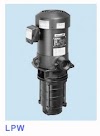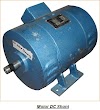Types of Changes in Substance - Have you ever noticed how rain is formed? In ancient times before physics developed as it is today, there were many myths about the origin of rain, for example, the Greek legend which states that rain is a punishment sent down by the god Zeus to destroy humans on earth.
After the development of physics, it is known that rain is a change in the form of liquid in the sea into gas then carried by the wind and the gas turns back into water. In addition to the phenomenon of rain, changes in the form of other substances also occur in daily life.
Take a look where is the camphor/camphor put in the bathroom or in the wardrobe? Slowly but surely the camphor stored in the bathroom or in the wardrobe will disappear by itself. So where did the camphor go? Was it eaten by a ghost? Of course not. The loss of camphor is due to the change of state of matter from solid to gas.
A change in the state of matter is a thermodynamic change from one state of matter to another. The absorption and release of heat causes a change in the state of matter.
Types of Substance Changes
The state of a substance can change when the atom/compound of the substance reaches a certain point which is quantified in the form of temperature. In this world there are several types of changes in the state of matter. The types of changes in the state of these substances are described below.
1. Freezing
Freezing is the change of state of a substance from a liquid to a solid. Substances that freeze will release heat energy (heat). The most common example of freezing in everyday life is water which becomes ice when put in the freezer.
2. Melting
Melting occurs when a substance receives a certain amount of heat energy (heat). Melting is the change of state of a substance from solid to liquid. Examples of substances that melt are ice that is heated and then turns into water or candles that are burned and turn into liquid.
3. Evaporation
Evaporation is the change of state of a substance from a liquid to a gas. It takes a certain amount of heat energy (heat) to make a liquid vaporize into a gas. An example of a substance that evaporates is boiled water if it is boiled continuously then the water will run out to evaporate into gas.
4. Condensation
Condensation is the change of state of a substance from gas to liquid. During the condensation process, heat is released to the condensed gas. An example of condensation is if we notice the grass or plants in the morning getting wet even though there was no rain before.
5. Sublimation
Sublimation is a change in the state of matter from solid to gas. It takes a certain amount of heat energy (heat) for the sublimation process. An example of sublimation as difficult to mention above is camphor which is a solid that turns into a gas.
6. Crystallize
Crystallization is the change of state from a gas to a solid. In the crystallization process, there is a release of heat energy (heat) in the crystallizing substance. An example of a crystallizing event is the changing of water vapor to snow.
That is the type of change in the form of substances that exist in this world, hopefully it will be useful.
Sumber http://keluargasepuh86.blogspot.com








